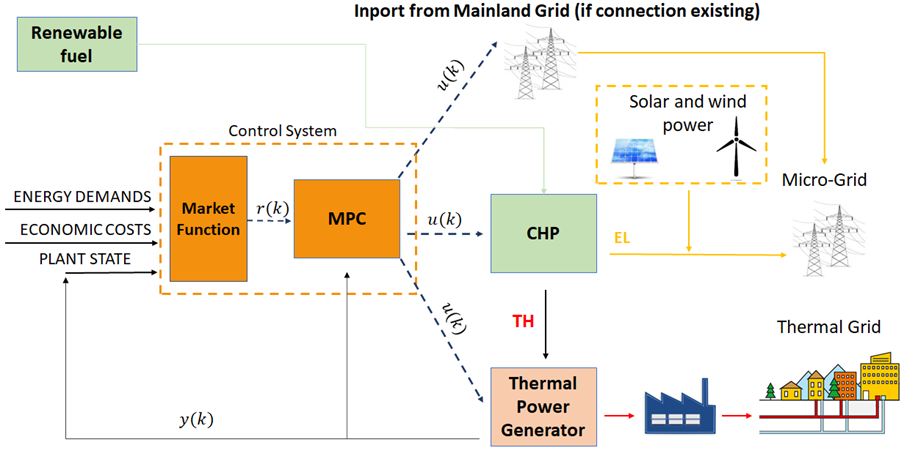Energy Management Systems (EMS)
Innovative EMS
Introduction
Energy storage is the process of storing energy produced at one moment for use at a later period in order to balance out the imbalance between energy production and demand. An accumulator or battery is a term used to describe a device that stores energy. There are several different types of energy, including kinetic, latent heat, gravitational potential, chemical, electricity, and radiation. Energy storage is the process of transforming energy from forms that are challenging to store to forms that are easier or more practical to store. By enabling huge amounts of extra power to be preserved over a range of time frames, from instantaneous storage in seconds to prolonged storage over days, energy storage helps stabilize variations in demand and supply.
Energy storage is crucial to the transition to a carbon-neutral economy because it takes several of the main tenets of the Clean Energy for All Europeans package into account. It represents a practical way to increase energy efficiency and incorporate more renewable energy sources into electricity systems by balancing power grids and saving surplus energy, but it will also help improve European energy security and create a well-functioning internal market with lower prices for consumers.
In the ROBINSON project's case multiple storage systems will be implemented.
Innovative EMS
Technical Description
As part of the ROBINSON project, different components of energy production, storage, and distribution will be integrated with existing grid connections via an intelligent Energy Management System (EMS). Inputs such as energy demands, plant status (solar and wind power, combined heat and power, etc.) and economic costs drive market functions that minimize OPEX and satisfy energy demand. Using the market function, real-time Model Predictive Control is able to obtain reference targets of prime movers. With Multi Inputs Multi Outputs MPC, imports are controlled from the mainland grid, CHP, and thermal power generators while respecting gradients and boundaries. Besides supplying electricity to Micro-Grid by burning renewable fuel, CHP also pre-heats air at the Thermal Power Generator inlet to reduce fuel consumption; besides receiving waste heat from industry. The EMS layout is depicted below.

EMS layout in ROBINSON concept
Technology requirements and operating conditions
The main components depend on each island’s characteristics, but in order to optimise the RES in Eigerøy, the following were selected for the installation and integration:
- The already existing connection to the mainland (i.e. sea cable and associated infrastructure).
- Wind energy (and solar & batteries once available on the island) used for electricity and heating.
- Available biomass converted into additional resources: wood biomass converted by gasification into syngas, wastewater with organic agents converted into bio-methane.
- Innovative storage in the form of heat and electricity, power-to-hydrogen-to-power and heat.
- A dispatchable renewable fuel-based CHP unit contributing with electricity and heating while at the same time generating the process steam for fish food production.
- Recovery of RES surplus and industrial symbiosis
Understanding the technical features of how data from the various renewable energy plants' systems will be transported to the EMS and who will have access to the stored data is essential for developing the cybersecurity modules. We can more successfully anticipate and concentrate on the task if we are aware of these aspects in advance. Therefore, we adhere to the following criteria:
- Entities, parts, and systems. A list of systems, entities, or individuals with Blockchain network access and their permissions, such as write or read. We must understand the many systems that contribute data to the EMS, as well as the access controls to the information stored in the Blockchain network.
- Unique identifiers. To produce a digital signature, we will require a unique identification for each device and component participating in the EMS's input data. The origin of the data will therefore be confirmed.
- Data administration. To properly build cybersecurity procedures, it is vital to understand how data from devices and components of various renewable energy plants will be accessible or reported, as well as how external information such as electrical and thermal needs or weather conditions will be collected.
